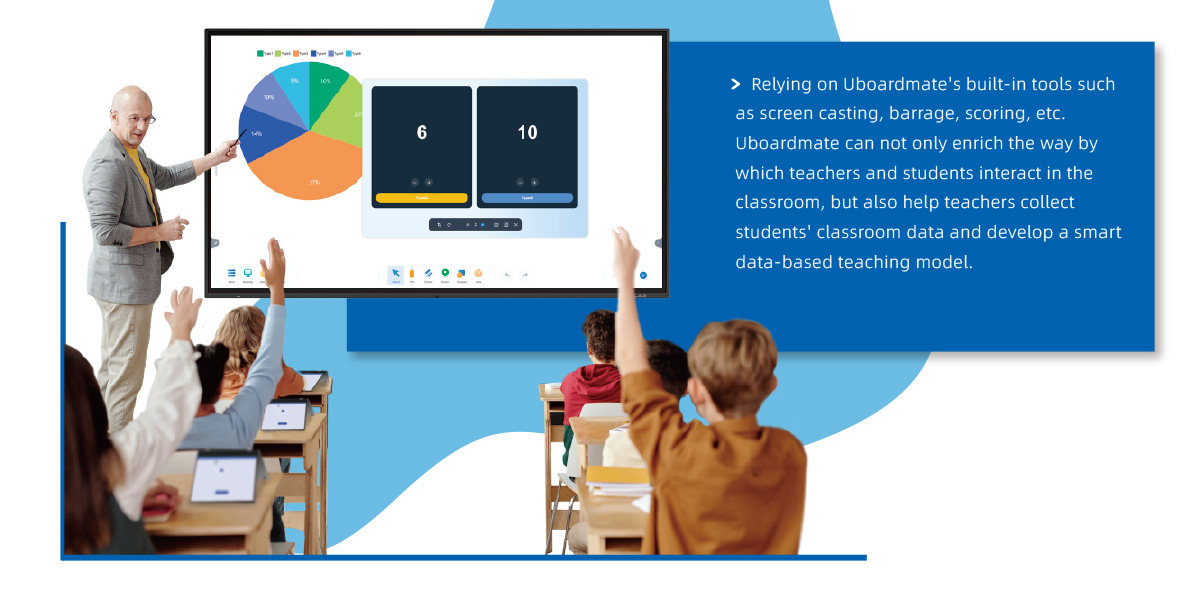From Chalk to Clicks How Whiteboard Software is Shaping the Future of Education
In the wave of educational digitization, whiteboard software holds significant importance. It transforms traditional classrooms and meeting rooms into interactive learning environments, enhancing engagement and collaboration between teachers and students or among colleagues. Whiteboard software allows for dynamic presentations, direct manipulation of digital content, and real-time sharing of ideas, which supports a more participative and interactive approach to teaching and learning.

Here are some key points highlighting the importance of whiteboard software in the context of educational digitization:
♦ Interactive Learning: Whiteboard software makes lessons more interactive by allowing teachers to create, annotate, and manipulate digital content directly on the board, which can then be seen and interacted with by students using their own devices.
♦ Enhanced Engagement: Students are more engaged when they can actively participate in the learning process. Whiteboard software often includes multi-touch capabilities, enabling multiple users to collaborate simultaneously on problems, experiments, or creative projects.
♦ Flexibility and Accessibility: Educational content becomes more accessible as whiteboards can be connected to various input devices like computers, tablets, and smartphones, providing flexibility in how materials are presented and interacted with.
♦ Suitable for All Ages and Subjects: The versatility of whiteboard software makes it suitable for learners of all ages and across different subjects, from mathematics and science to language arts and design.
♦ Real-Time Feedback: Teachers can provide immediate feedback on student work, helping to identify and address misconceptions promptly, which is crucial for effective learning.
♦ Collaboration Across Distances: For distance learning and remote education, whiteboard software facilitates collaboration regardless of geographical barriers, allowing students and educators to interact as if they were in the same room.
♦ Integration with Digital Tools: Whiteboard software often integrates with other digital tools and resources such as educational apps, websites, and online resources, making it easier to incorporate multimedia content into lessons.
♦ Recordkeeping and Revision: Sessions on the whiteboard can be saved and revisited, serving as a valuable resource for revision and ensuring that no information is lost after the class.
♦ Adaptability to Teaching Styles: Whiteboard software can adapt to various teaching styles, whether it's project-based learning, flipped classrooms, or traditional instruction methods.
♦ Future-Proofing Education: As technology continues to evolve, using whiteboard software prepares students for future workplaces that are increasingly reliant on digital tools and platforms.

The integration of whiteboard software in education aligns with the shift towards more interactive and student-centered learning approaches, preparing both students and educators for a digitally connected world.
